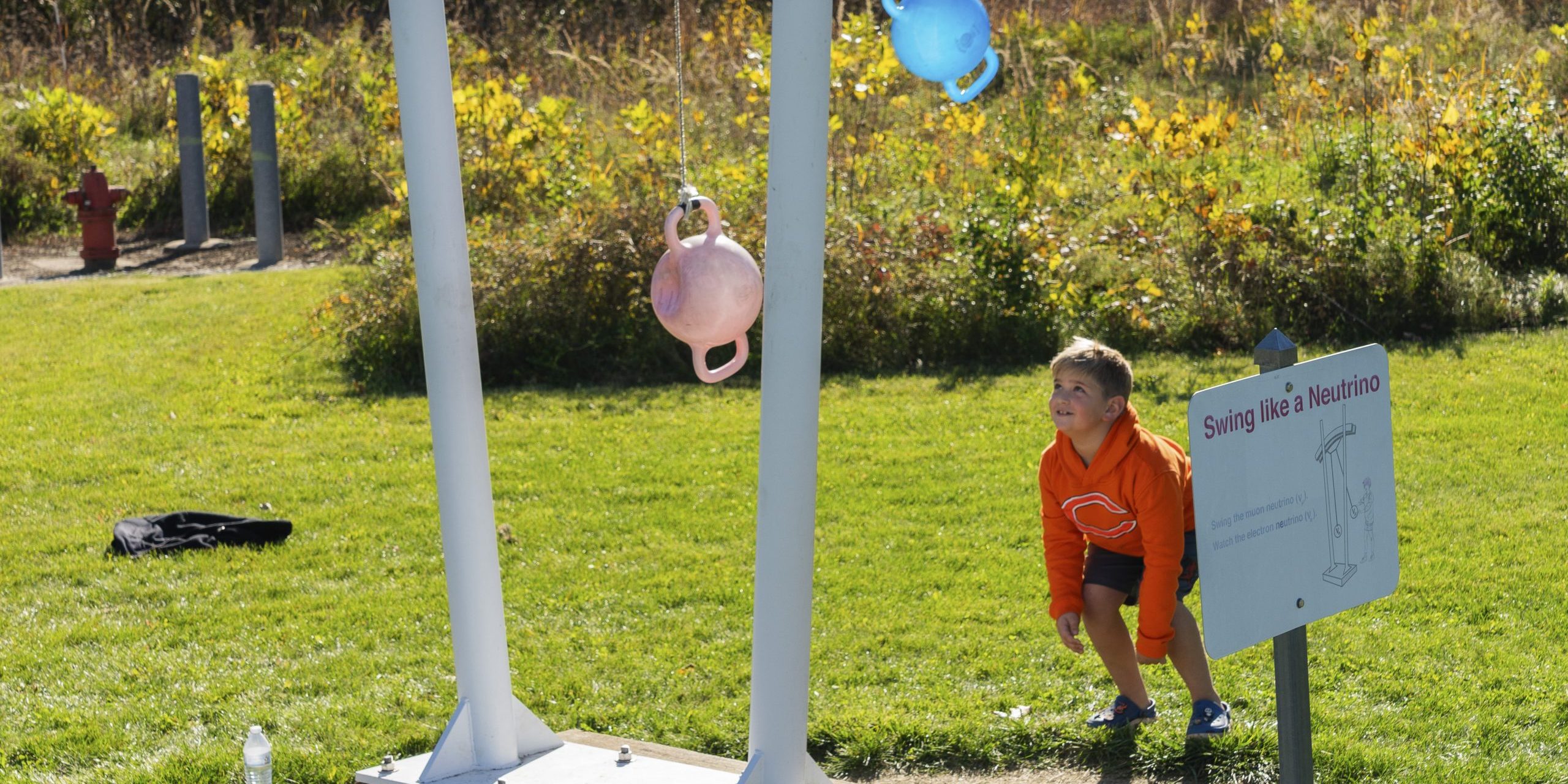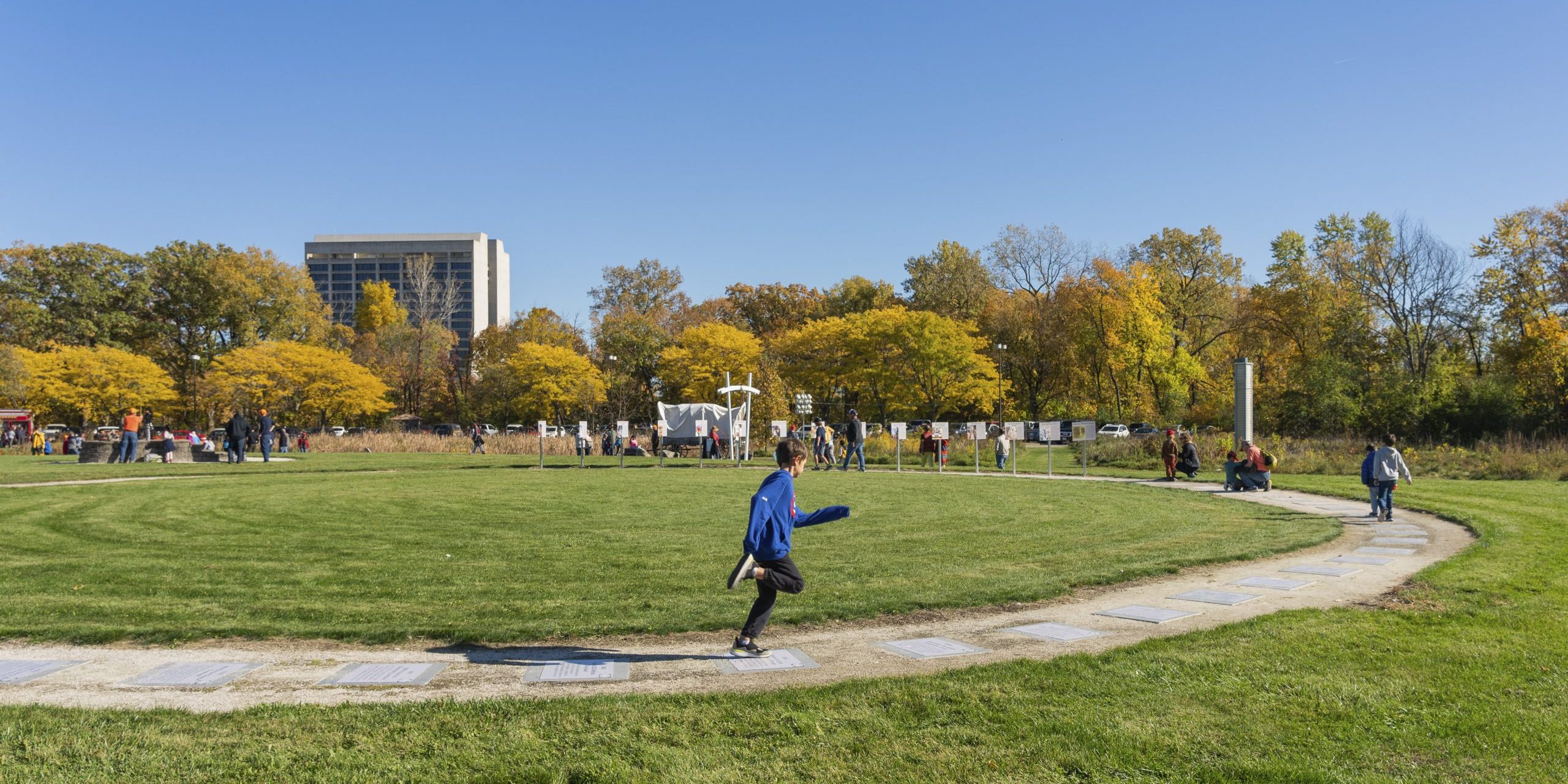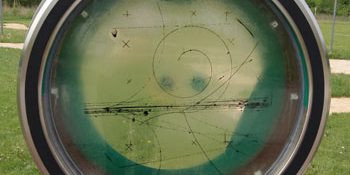This space includes Fermilab history, particles and waves, and clean energy sources.
In an informal, outdoor environment, visitors engage their bodies and minds as they learn about Fermilab’s history, present and future experiments, and gain more insight into the discovery process.
Spotlighted Exhibits
Fermilab Timeline introduces visitors to Fermilab’s history, present and future experiments, and gives more insight into the discovery process. Visitors also can observe particle tracks on the hydrogen bubble chamber window. During the 1970’s Fermilab operated the world’s largest liquid hydrogen bubble chamber. Physicists studied the interactions of charged particles as they went through the chamber by analyzing photos of the tracks left behind.
The smallest particles physicists study sometimes behave like waves. Visitors can explore wave behavior by pulling on a rope to generate waves in the long rope strung between two uprights and try to make second and third harmonic standing waves.
Fermilab physicists study an enigmatic particle called a neutrino. When they detect it, they find it can oscillate (change) from one type of neutrino into another. This phenomenon is like a coupled pendulum where energy transfer happens inside the system.
Solar panels are collections of solar cells – devices that convert sunlight into electricity. Lots of small solar cells spread over a large area can work together to provide enough power to be useful. The more sunlight a cell captures, the more electricity it produces; spacecrafts are usually designed with solar panels that can always be pointed at the Sun.
Switchgrass is an example of renewable energy – it is a biofuel that can provide five times as much energy as it takes to grow it. Switchgrass as a crop sequesters carbon, therefore reducing atmospheric carbon dioxide content. For many years it grew in the prairie, but now it is being grown in large-scale farms.





